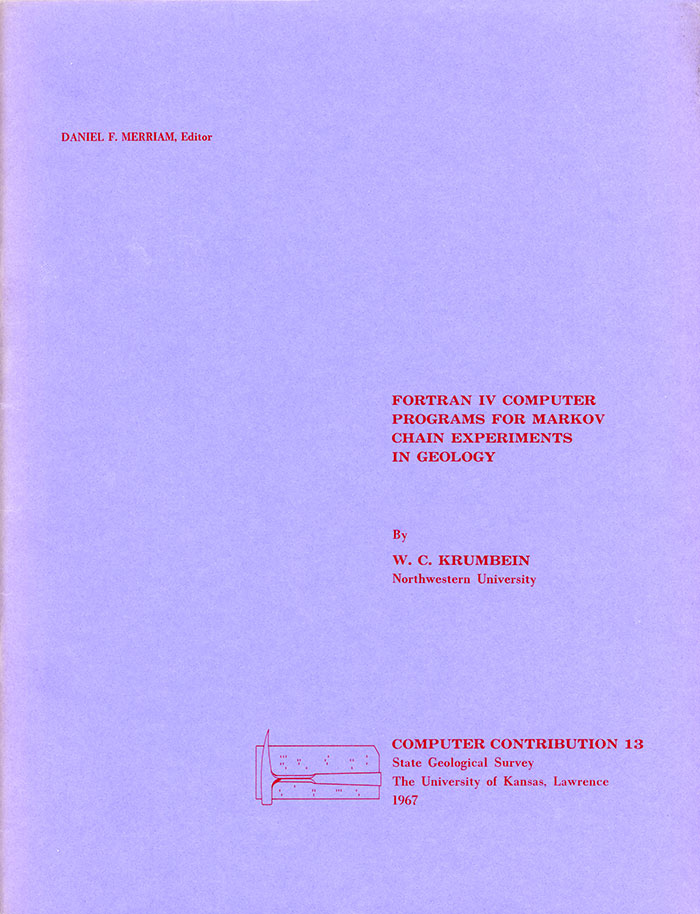FORTRAN IV Computer Programs for Markov Chain Experiments in Geology
DOI:
https://doi.org/10.17161/kgsbulletin.no..23493Abstract
Probabilistic models provide a mechanism for computer simulation of a wide variety of geological processes. This paper emphasizes first-order Markov chains because of their intuitive appeal and rapidly growing applications. Examples are based on stratigraphic analysis, but other uses of the model are discussed briefly.
First-order Markov chains are among the simplest stochastic process models, and they afford a point of entry into a large class of probabilistic mechanisms that can be useful in geology. This paper is designed to stimulate experimentation with these models, in part by providing relatively simple computer programs that cover four aspects of such analysis. These programs, listed in the Appendix, include one for testing the presence of a Markov property, a second for raising the transition probability matrix to successive powers in order to estimate the equilibrium states (i.e., the fixed probability vector) of a system, and a third for using the transition matrix in simulation studies. A fourth program for simulating independent-events processes (non-Markovian) can be used with the fixed probability vector of a Markov chain to obtain some interesting comparisons among different ways of structuring a sequence of observations or events.
Downloads

Downloads
Published
Issue
Section
License
Copyright (c) 2025 W.C. Krumbein

This work is licensed under a Creative Commons Attribution-NonCommercial 4.0 International License.
